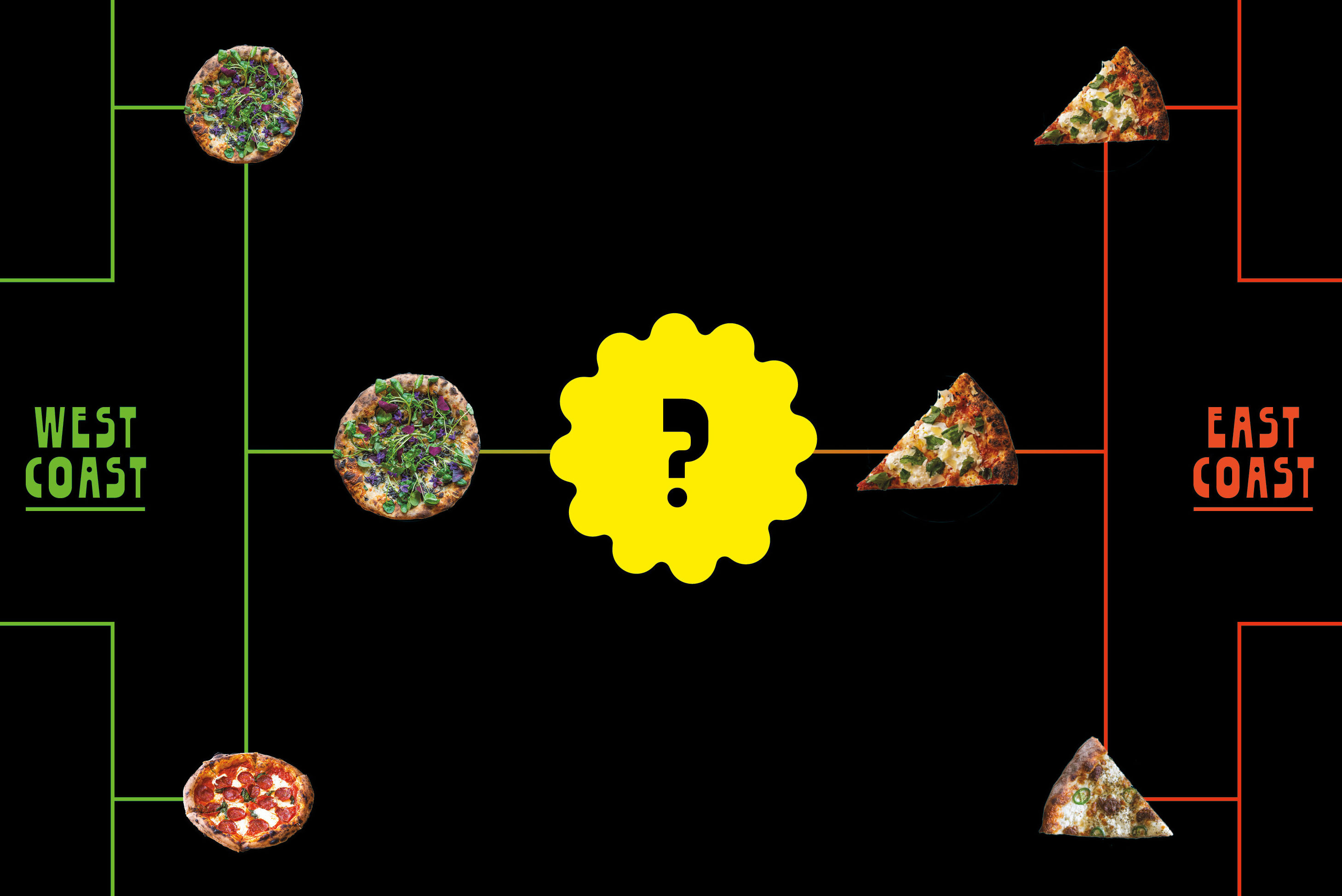Meet Kaede, Our New Favorite Sushi Spot
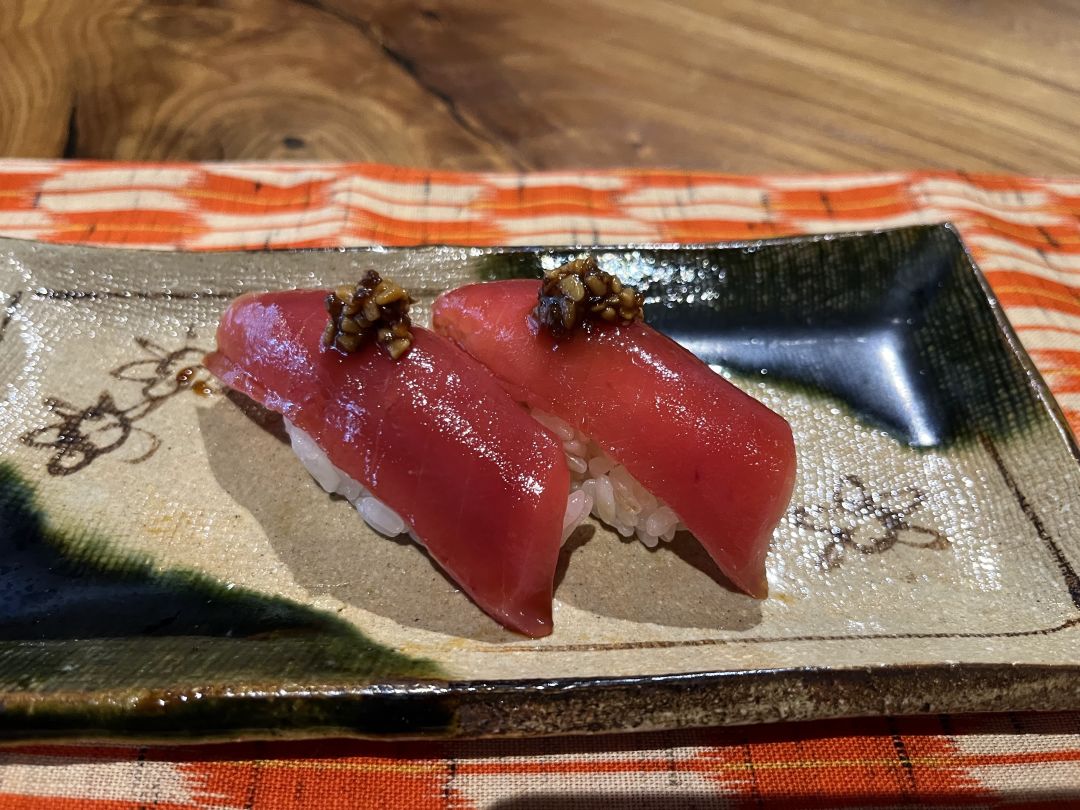
Tuna nigiri with sparse garnish lets the fish shine.
Image: Courtesy Kaede
You don’t expect to find fantastic sushi in a building sporting an Edward Jones Investments sign. But open the door, step into the hallway, and turn right for fiscal responsibility or left for the fish and rice of your dreams. The only indicator you’re in the right place is a set of children’s blocks on a coffee table in the window that spell out "Kaede."
Izumi Uehara, an accomplished kaiseki-style chef—who also doubles as the restaurant’s only server, host, and busser—will hurry over to greet you. Her husband, Shinji, is the restaurant’s sushi chef, quietly working behind the four-seat counter; in the dining room, there’s space for just a dozen more customers. Soft jazz plays overhead, and the decoration is sparse but carefully considered. Like a beloved neighborhood restaurant, there’s no pretension. All of which is why this is my favorite spot for sushi in Portland, and our pick for the city's best new restaurant so far in 2023.
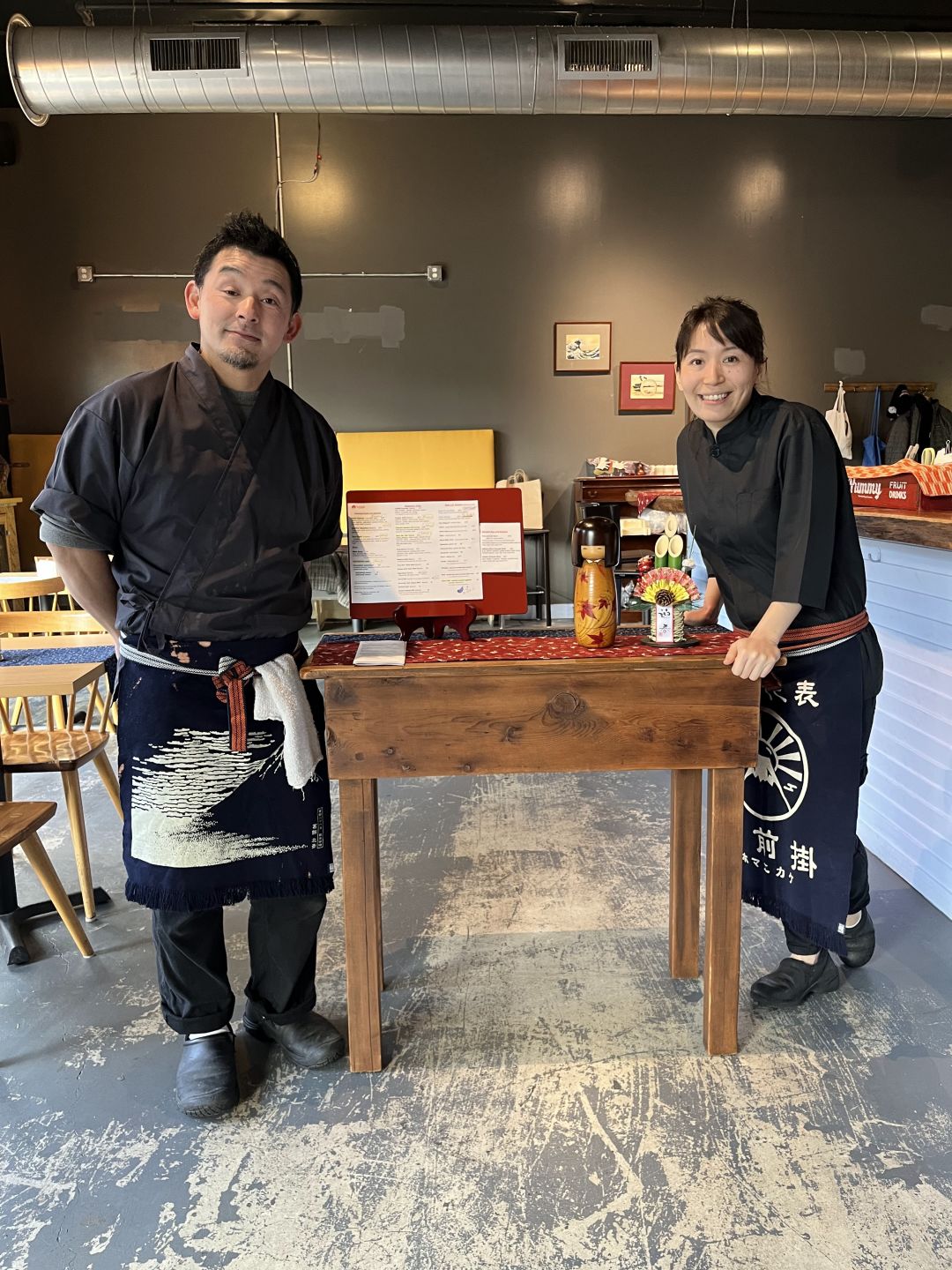
Husband-and-wife team Shinji (left) and Izumi Uehara are the owners and chefs of Kaede.
Image: Courtesy Kaede
Before Kaede opened in Sellwood in January, getting top-tier sushi and small plates felt like it required a special occasion, like a birthday or an anniversary, to be enjoyed, and only with the most special of company. Hot spots Nimblefish and Nodoguro require reservations months in advance, not to mention a bill in the triple digits. What makes Kaede so refreshing is that you can come as you are: alone, or with a friend or a date. It’s a sushi kappo–style restaurant, a style of cuisine new to Portland that serves both sushi and small plates, and falls somewhere between a casual izakaya and a formal kaiseki.
You can show up with $50 in your pocket and order a couple things for an hour-long dinner, or spend $100 and feast all evening. Seasonality is essential—the name Kaede means maple leaf, chosen for its beauty throughout the year. There’s something for every mood: sushi in nigiri and rolls, boasting so many varieties of fish you’re bound to try something new, but also small plates like agedashi tofu and chawanmushi. After sushi, fill your belly with a hearty bowl of duck soba in delicate dashi. The only rule? Groups are limited to two, and reservations are required. Two-tops are booked a month out, but you could also sneak in for solo sushi at 4:30 p.m. with less than a week’s notice. There’s no rushing courses or cramming in customer after customer—it's just you, the chefs, the small plates, and the sushi.

Izumi preps castella-style tamago.
Image: Courtesy Kaede
The dishes that Izumi crafts in the kitchen are made with exacting care and subtle touches. Take the agedashi tofu, for instance—not really a rarity on Japanese menus (I’ve even spotted it at St. Johns dive bar Slim’s), but this one boasts extra-delicate breading, which complements the tofu’s custardy texture. The dashi, too, is lighter and more complex. Even the bonito flakes are shredded extra finely, mounded on top like a heap of parmesan on pasta. Generosity is a key ingredient. Though the menu promised a chawanmushi with seasonal maitake mushrooms, it delivers maitakes so plentiful they could have been a course on their own, garnished with yuzu curls. The jiggly custard, silky and slurpable, concealed a scallop here, a shrimp there.
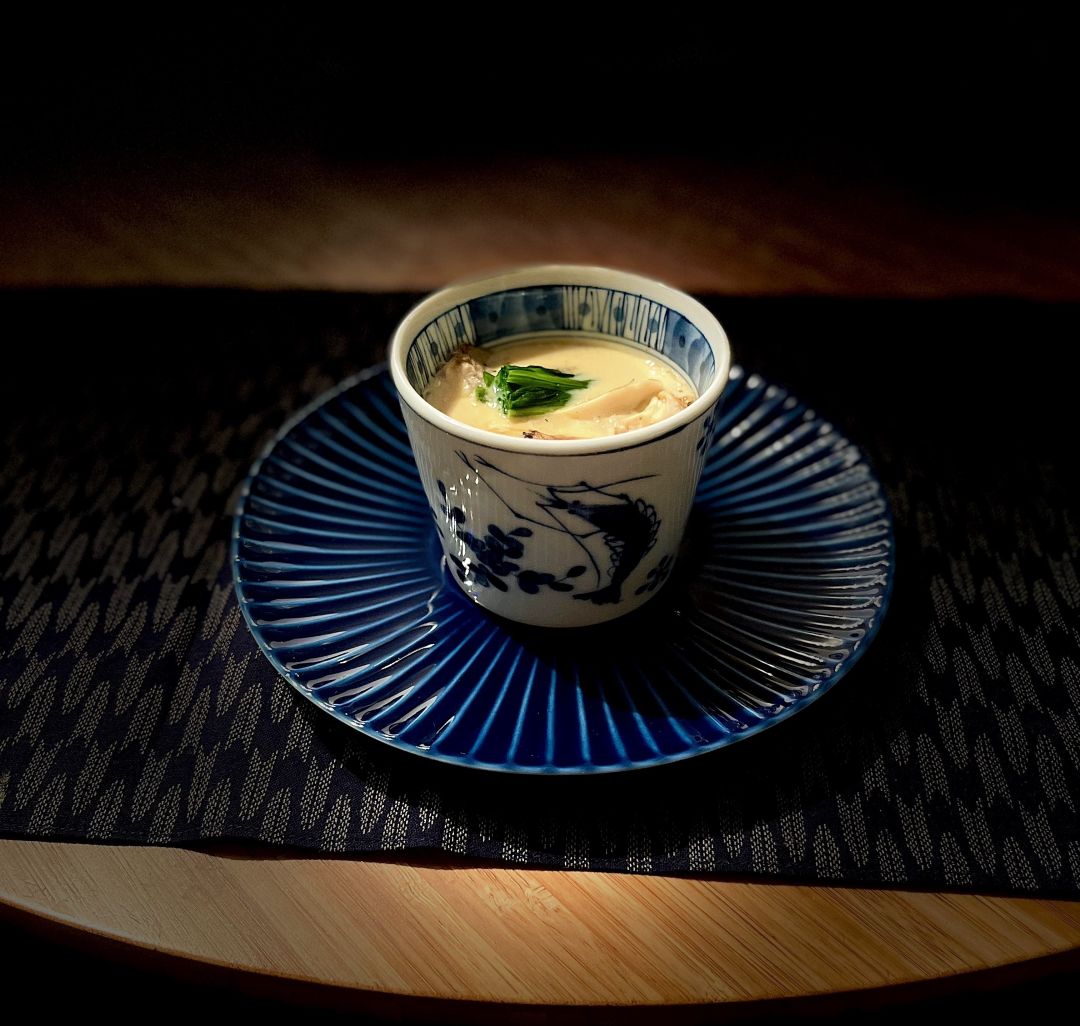
Chawanmushi changes with the seasons, including a maitake version in cooler months.
Image: Courtesy Kaede
Nigiri specials are printed on a hand-trimmed square of paper, nearly all from Tokyo’s fish market. I’d never heard of half beak, a delicately flavored, firm-textured silver fish that looks like it’s missing its top jaw. Rarely seen golden-eye snapper has a hint of natural sweetness and fat. At times, Shinji employs a little garnish, like jalapeño or yuzu kosho, that enhances rather than distracts from the fish. Most impressive are the sardines (fatty, salty, and delightfully fishy), the scallops (super sweet and firm), and the buttery, melty chu-toro. You can try one or two, or try them all and make sampling exciting varieties of fish a budget-flexible endeavor.
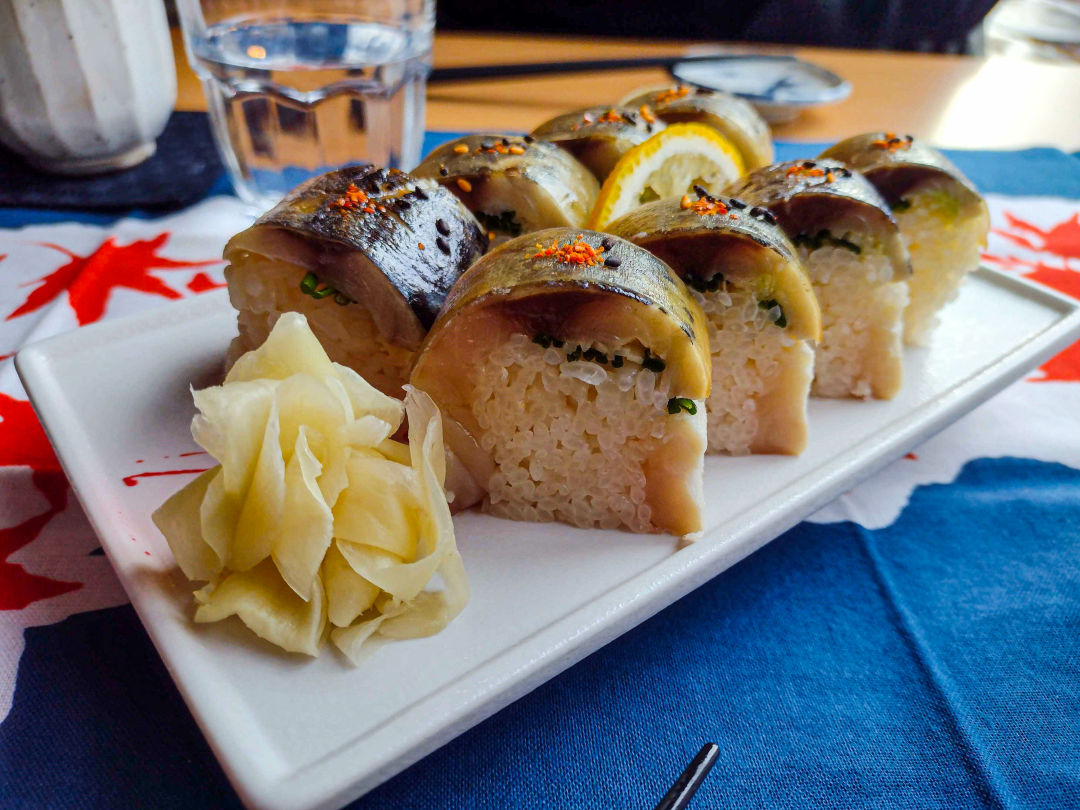
Saba battera
Image: Courtesy Kaede
The regular nigiri menu is small, about 12 varieties. Throw a dart at any of them and you won't be disappointed. The tamago is bouncy, juicy, and sweet, balanced with a substantial hit of dashi; if you’re lucky, you might catch Izumi's castella-style tamago, risen like a cake and ringed with a caramelized golden crust. This is the place to break out of your typical roll rut of California rolls or dragon rolls, omitted from the menu entirely. Instead, try the signature saba battera. It’s a square-shaped roll where vinegary, mouth-puckering-yet-buttery cured mackerel gets stacked atop a translucent, crunchy sheet of kombu, with punches of yuzu and ginger tucked between the fish and the perfectly cooked sushi rice. According to the Ueharas, battera often comes in bento boxes on shinkansen trains—its lightly pickled flavor helps it travel well. Here, the finishing touch of a butane torch helps to bring out the mackerel’s fattiness, making it extra special.
Sake is also a draw, with its own seasonal bent. In cooler months, the Ueharas choose from sakes that are particularly well-suited to being served warm. From a menu of nine or so sakes, I tried a warmed cedar-aged option made from heirloom rice, which had a light mushroomy umami flavor and a hint of sweetness. Izumi is happy to make suggestions to pair with your food. Trust her.
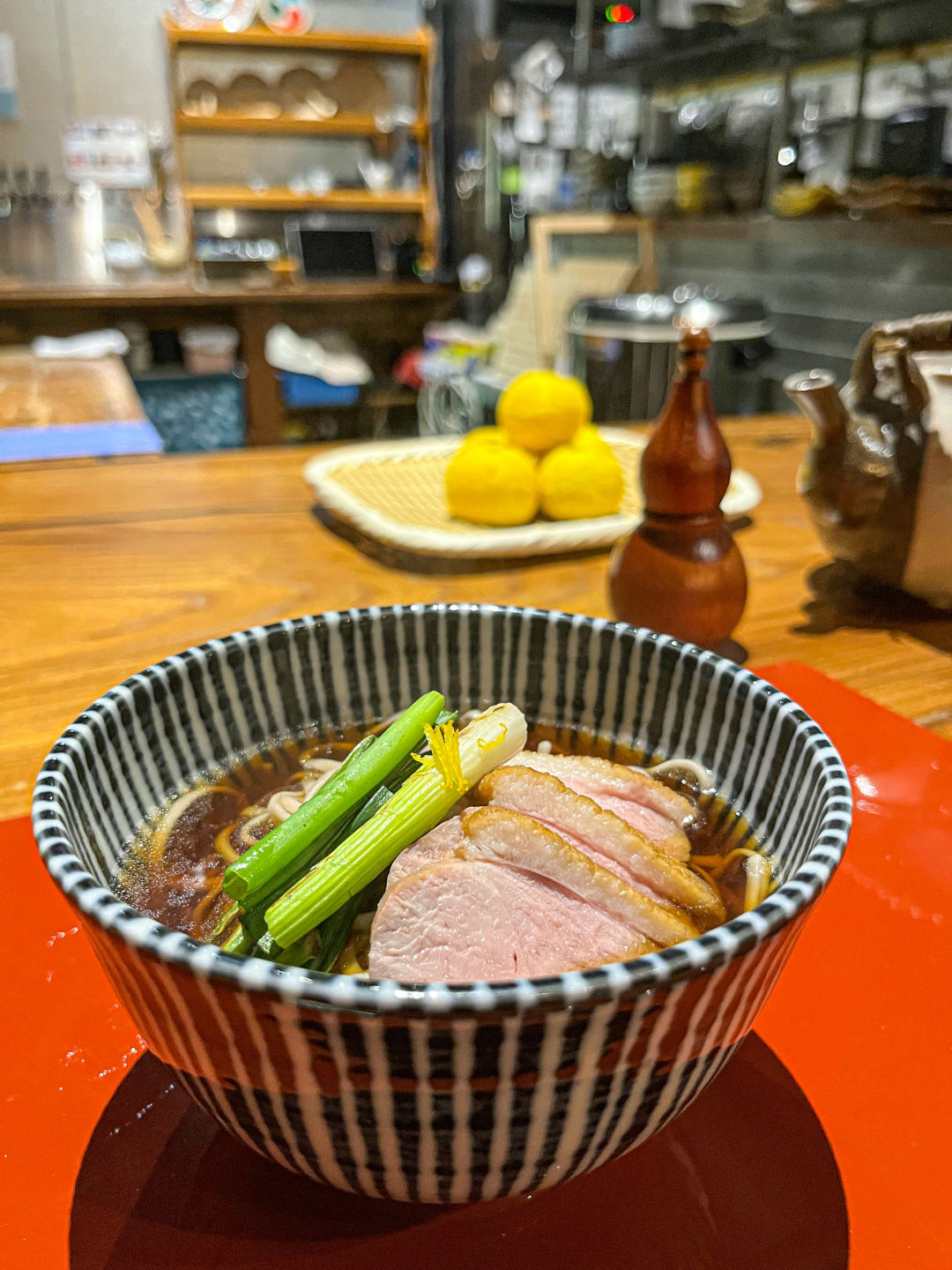
Duck soba
Image: Courtesy Kaede
The single entry in the “after sake” menu is a so-called mini serving of duck soba—plenty for two to share—that floats perfectly rare slices of duck breast in a light, slightly sweet dashi. The soba has extra nuttiness and bite, and it’s garnished simply with green onion and a little spicy, tangy yuzu kosho.
By specializing in a few unusual dishes done unusually well, Kaede has created a strong identity for itself in our restaurant scene. Saba battera could be the city’s next Canard steamburger, while duck soba could replace Afuri’s yuzu shio ramen as a go-to wintertime soup. Finding a neighborhood restaurant that offers such an immersive, top-quality experience without the pretension is rare. Without shelling out serious cash or snagging a rare reservation, this is the best Japanese restaurant in Portland.


